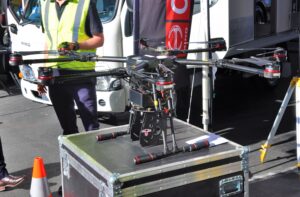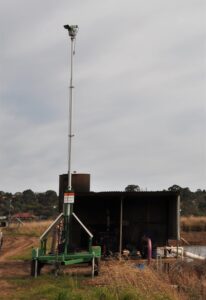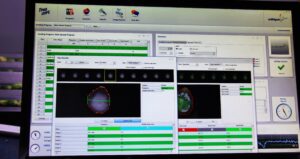
The influence of Agtech – from our food supply chain to our forests
By Dan Austin
There is no denying that the horticultural landscape has changed in Australia and across the world, as technology advances faster than anyone could have imagined.
Whether it is a drone hovering above a broad acre farm using infrared imaging to assess the health of the crop, a revolving laser tower acting as a scarecrow, or the irrigator using sophisticated probes and software to determine soil moisture and calculate appropriate watering scheduling, agtech has revolutionised the way we grow plants from propagation to harvest.

As the adage goes, ‘necessity is the mother of invention’ and the challenges posed by climate change, population growth, dwindling natural resources and rising production costs certainly present a necessity to address food security through innovative agtech. So much so, that the industry is becoming increasingly important for Australia’s economy and is set to become our country’s next 100-billion-dollar industry by 2030.
One of the best ways to gain an insight into just how significantly agtech will influence our horticultural supply chains into the future, is to attend one of the numerous industry conferences frequently held across the country. Despite the COVID19 pandemic, many such events have been able to take place either virtually or in the flesh, and continue to provide a showcase of the current and future trends in agtech. Ausveg’s inaugural Agtech Summit was held in Melbourne back in 2018 and has since returned each year, opting to adapt to a virtual platform in 2020 and 2021. Organisers of the Hort Connections Conference, on the other hand, took the gamble in maintaining a face-to-face format and, in the absence of lockdowns, held a fantastic event at the Brisbane Convention & Exhibition Centre in June this year. Its choice is being repeated by the conveners of the Protected Cropping Australia 2021 Conference, being held from the 25th to the 28th of October this year in Coffs Harbour, which will have agtech presented front and centre, and we are all crossing our fingers, that it goes ahead.


Agtech goes beyond the food chain though and is also increasingly valuable in the world of forestry, particularly in the assessment of tree health. Historically, to determine the internal health of mature trees and potential decay, involved invasive techniques of boring into the plant’s tissues. Even relatively recent technology considered low in invasiveness, like the use of resistographs (devices that record the resistance given by a tree’s wood against a small drill bit to determine decay), are being quickly superseded by alternative technologies that cause no wound at all. Sonic tomographs now present a completely non-invasive detection device which map the internal wood density of a tree, producing a two-dimensional computer-generated image that is clear and simple to understand. Its virtually an ultrasound for trees and with the emergence of ground penetrating radar technology, the health of tree roots can be assessed just as easily.
Measuring sap flow is another popular technique used to provide a picture of plant health. Sap flow sensors precisely quantify plant water use, which not only correlates with plant health but also gives an indication of drought response, irrigation requirements, photosynthetic activity and as a result, expected growth speeds in plantation forestry. Sap flow metres work in various ways, but all use heat as a tracer element. Heat is applied to the sapwood and xylem of the tree being tested, and the sap flow is calculated by tracking the heat dissipated by the ascending liquid as it makes its way upward through the tree, where it is eventually released as water vapour through pores in the trees leaves called stomata.

PhotosynQ is another emerging agtech gem that allows for plant health tests in the field that would otherwise generally require lab conditions. A simple handheld sensor can record photosynthetic phenotypes and perform various tests related to light absorption. In addition, the device can collect data related to abiotic stressors, including ambient temperature, relative humidity, barometric pressure, and altitude, as well as offering data on contactless leaf temperature, leaf angle and leaf direction. The company’s software is also collaborative, and data can be collected and compared for relevant species from across the globe. It may well be a game changer for both our food supply chain and our forests.

Whether it is the utilisation of automation, artificial intelligence and big data, synthetic biology or nano particles, the list goes on when it comes to emerging agtech. As a result, it seems that the trend of young people moving away from horticulture and farming, may well see a change as our best and brightest find roles in a new technology-driven form of the fields.
It is an exciting period of change for our industry and in the face of perpetually increasing challenges, the agtech boom may be arriving just in the nick of time.
